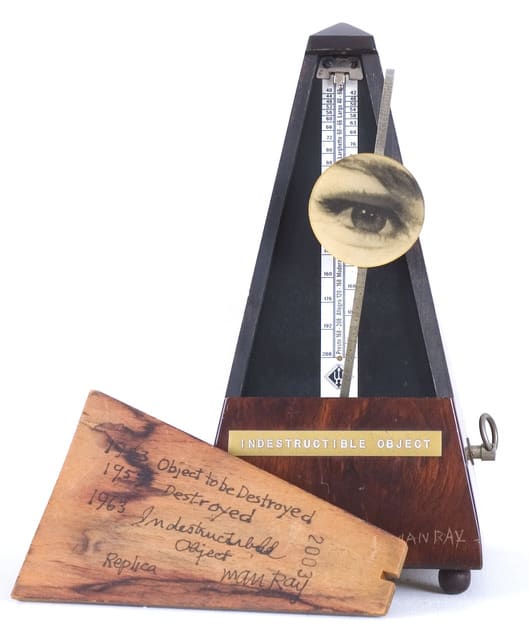(August 27, 1890 – November 18, 1976)
Man Ray’s career is distinctive above all for the success he achieved in both the United States and Europe. First maturing in the center of American modernism in the 1910s, he made Paris his home in the 1920s and 1930s, and in the 1940s he crossed the Atlantic once again, spending periods in New York and Hollywood. His art spanned painting, sculpture, film, prints and poetry, and in his long career he worked in styles influenced by Cubism, Futurism, Dada and Surrealism. He also successfully navigated the worlds of commercial and fine art, and came to be a sought-after fashion photographer. He is perhaps most remembered for his photographs of the inter-war years, in particular the camera-less pictures he called ‘Rayographs’, but he always regarded himself first and foremost as a painter.
Although he matured as an abstract painter, Man Ray eventually disregarded the traditional superiority painting held over photography and happily moved between different forms. Dada and Surrealism were important in encouraging this attitude; they also persuaded him that the idea motivating a work of art was more important than the work of art itself.
For Man Ray, photography often operated in the gap between art and life. It was a means of documenting sculptures that never had an independent life outside the photograph, and it was a means of capturing the activities of his avant-garde friends. His work as a commercial photographer encouraged him to create fine, carefully composed prints, but he would never aspire to be a fine art photographer in the manner of his early inspiration, Alfred Stieglitz.
André Breton once described Man Ray as a ‘pre-Surrealist’, something which accurately describes the artist’s natural affinity for the style. Even before the movement had coalesced, in the mid 1920s, his work, influenced by Marcel Duchamp, had Surrealist undertones, and he would continue to draw on the movement’s ideas throughout his life. His work has ultimately been very important in popularizing Surrealism.
